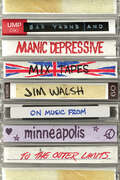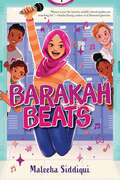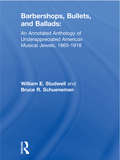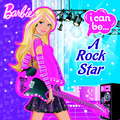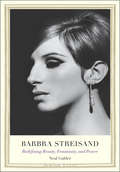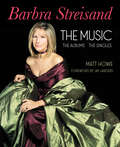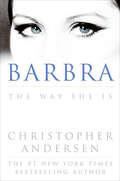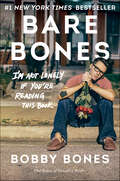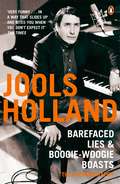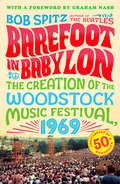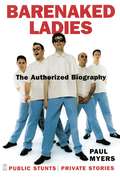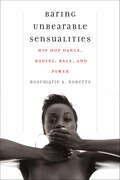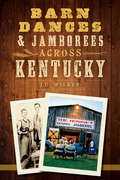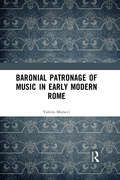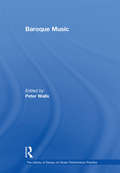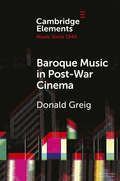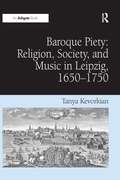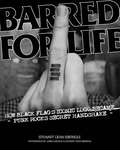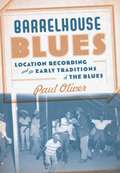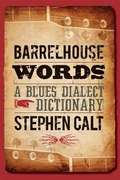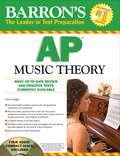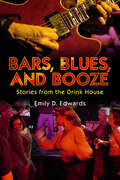- Table View
- List View
Bansuri-1 Textbook for Arts class 3 - NCERT-25: बाँसुरी-1 कक्षा 3 कला की पाठ्यपुस्तक - एन सी ई आर टी-२५
by National Council of Educational Research and Training"बांसुरी – I" कक्षा 3 के लिए बनाया गया एक कला पाठ्यपुस्तक है, जो राष्ट्रीय शिक्षा नीति (NEP) 2020 और राष्ट्रीय पाठ्यचर्या रूपरेखा (NCF-SE) 2023 के तहत विकसित की गई है। यह पुस्तक चार प्रमुख कला रूपों—संगीत, दृश्य कला, नृत्य और रंगमंच—से बच्चों को परिचित कराती है। इसमें इंटरैक्टिव गतिविधियों के माध्यम से रचनात्मकता, आत्म-अभिव्यक्ति और सांस्कृतिक समझ को बढ़ावा दिया गया है। पाठ्यपुस्तक अनुभवात्मक शिक्षण पर बल देती है, जिससे छात्र गायन, चित्रकारी, अभिनय और शारीरिक गतिविधियों के माध्यम से कलात्मक परंपराओं की खोज कर सकें। यह समावेशी कक्षा पद्धतियों को अपनाती है, डिजिटल शिक्षा को क्यूआर कोड के माध्यम से एकीकृत करती है, और स्थानीय कलाकारों व परिवारों की भागीदारी को प्रोत्साहित करती है। बांसुरी – I न केवल कलात्मक कौशल विकसित करने में सहायक है, बल्कि यह आत्म-जागरूकता और भारत की समृद्ध सांस्कृतिक विरासत की सराहना करने की भावना भी जागृत करती है, जिससे बच्चे रचनात्मक और आलोचनात्मक सोचने की क्षमता से सुसज्जित हो सकें।
Bar Yarns and Manic-Depressive Mixtapes: Jim Walsh on Music from Minneapolis to the Outer Limits
by Jim WalshBar Yarns and Manic Depressive Mix Tapes distills thirty delirious, jam-packed years of some of the best music writing ever to come out of the Twin Cities. As a writer and musician, the ever-curious Jim Walsh has lived a life immersed in music, and it all makes its way into his columns and feature articles, interviews and reviews, including personal essays on life, love, music, family, death, and, yes, the manic-depressive highs and lows that come with being an obsessive music lover and listener. From Minneapolis&’s own Prince to such far-flung acts as David Bowie, the Waterboys, Lucinda Williams, Parliament-Funkadelic, L7, the Rolling Stones, the Ramones, U2, Hank Williams, Britney Spears, Elvis Presley and Nirvana, Walsh&’s work treats us to a chorus of the voices and sounds that have made the music scene over the past three decades. The big names are here, from Rosanne Cash to Bruce Springsteen to Bob Marley and Jackson Browne, but so are those a little shy of superstardom, like the Tin Star Sisters and Uncle Tupelo, Son Volt, the Gear Daddies, Semisonic, and The Belfast Cowboys. The book is also a tour (de force) of the Twin Cities' most celebrated music venues past and present, from the Prom Ballroom to Paisley Park to Duffy's. When Walsh isn't celebrating the sheer magic of live music or dreaming to tunes blasting from the car console, he might be surveying the scene with the Hamm's Bear at Grumpy's or the Double Deuce or singing the last night at the Uptown Bar blues. Whether he's dishing dirt with Yoko Ono or digging the Replacements' roots, giving an old rocker a spin or offering a mic to the latest upstart, Jim Walsh reminds us that in the land of a thousand lakes there are a thousand dances, and the music never dies.Capturing the pure notes and character of the sound of the Twin Cities and beyond, with a keen eye for trends and the telling detail, his book truly is a mix tape of thirty years of unforgettable music.
Barakah Beats
by Maleeha SiddiquiJulie and the Phantoms meets Amina's Voice! This is a sweet, powerful, and joyous novel about a Muslim girl who finds her voice on her own terms... by joining her school's most popular band.This book is perfect for fans of The First Rule of Punk or Save Me a Seat.Twelve-year-old Nimra Sharif has spent her whole life in Islamic school, but now it's time to go to "real school."Nimra's nervous, but as long as she has Jenna, her best friend who already goes to the public school, she figures she can take on just about anything.Unfortunately, middle school is hard. The teachers are mean, the schedule is confusing, and Jenna starts giving hijab-wearing Nimra the cold shoulder around the other kids.Desperate to fit in and get back in Jenna's good graces, Nimra accepts an unlikely invitation to join the school's popular 8th grade boy band, Barakah Beats. The only problem is, Nimra was taught that music isn't allowed in Islam, and she knows her parents would be disappointed if they found out. So she devises a simple plan: join the band, win Jenna back, then quietly drop out before her parents find out.But dropping out of the band proves harder than expected. Not only is her plan to get Jenna back working, but Nimra really likes hanging out with the band—they value her contributions and respect how important her faith is to her. Then Barakah Beats signs up for a talent show to benefit refugees, and Nimra's lies start to unravel. With the show only a few weeks away and Jenna's friendship hanging in the balance, Nimra has to decide whether to betray her bandmates—or herself.
Barbershops, Bullets, and Ballads: An Annotated Anthology of Underappreciated American Musical Jewels, 1865-1918
by William E Studwell Bruce R SchuenemanThrough Barbershops, Bullets, and Ballads: An Annotated Anthology of Underappreciated American Musical Jewels, 1865--1918, you will discover older musical gems written during a half-century period of geographical, economic, political, and cultural expansion in the United States. Due to the fact that our collective American consciousness is rapidly developing cultural amnesia about or indifference to many of these older songs, the authors felt that a scholarly anthology needed to be produced before another century and millennium overwhelmed us. With Barbershops, Bullets, and Ballads, you will discover academic composers such as Arthur Foote, George Chadwick, and Amy Beach and find annotations outlining the history of the songs as well as the actual words and music.Barbershops, Bullets, and Ballads reveals to you such underappreciated songs as: “Above in Her Chamber,” with music by Julius Eichberg and lyrics by poet Celia Thaxter “In the Evening by the Moonlight,” with music and lyrics by James A. Bland “My Wild Irish Rose,” with music and lyrics by Chauncey Olcott “Cheyenne,” by lyricist Harry H. Williams and composer Egbert Van Alstyne “Come, Josephine in My Flying Machine,” with music by Fred Fisher and lyrics by Alfred BryanIn Barbershops, Bullets, and Ballads, you will find sections containing historical notes of featured songs in chronological order. Through this remarkable collection, you will discover an anthology of popular music of the bygone “golden age” of song and take a pleasurable voyage back to a time that is long gone.
Barbie: I can be A Rock Star
by Mary Man-Kong Jiyoung AnBarbie decides to enter the big talent competition. Unfortunately, so does her biggest rival: her "frenemy," Raquelle! Barbie is very nervous--but with a little help from her friends, she rocks the house! This full-color storybook comes with over 50 rockin' stickers!From the Trade Paperback edition.
Barbra Streisand: Redefining Beauty, Femininity, and Power
by Neal GablerBarbra Streisand has been called the "most successful...talented performer of her generation" by Vanity Fair, and her voice, said pianist Glenn Gould, is "one of the natural wonders of the age." Streisand scaled the heights of entertainment--from a popular vocalist to a first-rank Broadway star in Funny Girl to an Oscar-winning actress to a producer and director. But she has also become a cultural icon who has transcended show business. To achieve her success, Brooklyn-born Streisand had to overcome tremendous odds, not the least of which was her Jewishness. Dismissed, insulted, even reviled when she embarked on a show business career for acting too Jewish and looking too Jewish, she brilliantly converted her Jewishness into a metaphor for outsiderness that would eventually make her the avenger for anyone who felt marginalized and powerless. Â Neal Gabler examines Streisand's life and career through this prism of otherness--a Jew in a gentile world, a self-proclaimed homely girl in a world of glamour, a kooky girl in a world of convention--and shows how central it was to Streisand's triumph as one of the voices of her age.
Barbra Streisand: The Music The Albums The Singles
by Matt HoweOn February 25, 1963, Columbia Records released The Barbra Streisand Album. The first song was "Cry Me a River," and with that a star was born. Barbra Joan Streisand had a zany personality backed by a talent that Stephen Sondheim once described as "one of the two or three best voices in the world of singing songs," adding "It's not just her voice but her intensity, her passion and control." Harold Arlen, another of her favorite composers, commented, "This young lady . . . has a stunning future."With all-male rock groups like the Beatles, the Beach Boys, and the Four Seasons ruling the charts, no one expected a twenty-year-old female singer from Brooklyn to not just hit No. 1, but repeat that accomplishment every decade that followed all the way to the next millennium and become the best-selling female recording artist of all time. Now, for the first time ever, comes the definitive book on the extensive recording career of this towering cultural icon, the Funny Girl considered by many to be the most talented singer of her generation.Barbra Streisand: The Albums, The Singles, The Music takes readers on a journey through every album, soundtrack, and single Streisand has released over the past sixty years. Our guide on this musical tour is Matt Howe, who has run Barbra Archives, the definitive Streisand-themed website, since 2003. He also has assisted Team Stresiand on liner notes on her Release Me album series. Besides analysis of every studio, live concert, and official compilation release, the book contains over three hundred FULL-COLOR photos from the albums, press kits, and Streisand herself. Also included are features on both Streisand's signature songs ("People," "You Don't Bring Me Flowers," "Evergreen," "The Way We Were," and "Don't Rain on My Parade") and on her longtime collaborators (Sondheim, Marty Erlichman, Alan and Marilyn Bergman, and others.) No gossip. No dirt. Just a deep dive into over seventy albums from The Greatest Star.This an oversized hardback book with full-color illustrations, printed on premium paper.
Barbra: The Way She Is
by Christopher AndersenThe #1 New York Times bestselling biographer presents “a scandalicious new bio packed with fresh dirt on the world’s most reclusive diva” (New York Post).She is a one-name legend, a global icon. Yet most of what we know about Barbra Joan Streisand is the stuff of caricature: the Brooklyn girl turned Grammy–winning singer and Oscar–winning actress; a skinflint and a philanthropist; a connoisseur and a barbarian. Even to her legions of fans, the real Streisand has always remained tantalizingly unknowable. Until now. In Barbra, acclaimed biographer Christopher Andersen taps into important, eyewitness sources to paint a startling portrait of the artist . . . and the woman. The many revelations include:Surprising new details about her wedding and marriage to James Brolin.New information about her many failed love affairs, including her never-before-revealed relationships with Prince Charles and Princess Diana’s doomed lover Dodi Fayed—as well as Warren Beatty, Ryan O’Neal, former Canadian prime minister Pierre Trudeau, Steve McQueen, Richard Gere, Kris Kristofferson, Don Johnson, Jon Voight, Andre Agassi, Peter Jennings, and more . . .An inside account of what happened between Streisand and Bill Clinton in the White House, their relationship today, and how Hillary feels about Barbra.Revealing behind the scenes details from her classic movies and historic recording sessionsNew insights into Barbra’s relationship with her only child, Jason.
Bare Bones: I'm Not Lonely If You're Reading This Book
by Bobby Bones#1 New York Times BestsellerA touching, funny, heart-wrenching, and triumphant memoir from one of the biggest names in radio, the host of The Bobby Bones Show, one of the most listened-to drive time morning radio shows in the nation.Growing up poor in Mountain Pine, Arkansas, with a young, addicted mom, Bobby Estell fell in love with country music. Abandoned by his father at the age of five, Bobby saw the radio as his way out—a dream that came true in college when he went on air at the Henderson State University campus station broadcasting as Bobby Bones, while simultaneously starting The Bobby Bones Show at 105.9 KLAZ. Bobby’s passions were pop, country music, and comedy, and he blended the three to become a tastemaker in the country music industry, heard by millions daily. Bobby broke the format of standard country radio, mixing country and pop with entertainment news and information, and has interviewed some of the biggest names in the business, including Luke Bryan, Taylor Swift, Blake Shelton, Tim McGraw, Lady Antebellum, and Jason Aldean.Yet despite the glamour, fame, and money, Bobby has never forgotten his roots, the mom and grandmother who raised him, the work ethic he embraced which saved him and encouraged him to explore the world, and the good values that shaped him. In this funny, poignant memoir told in Bobby’s distinctive patter, he takes fans on a tour of his road to radio. Bobby doesn’t shy away from the curves he continues to navigate—including his obsessive-compulsive disorder—on his journey to find the happiness of a healthy family.Funny and tender, raw and honest, Bare Bones is pure Bobby Bones—surprising, entertaining, inspiring, and authentic.
Barefaced Lies and Boogie-Woogie Boasts
by Harriet Vyner Jools HollandJools Holland has had a fascinating life. From playing on bomb sites as a boy in the East End, to skiving off school and then selling millions of records with Squeeze, the first twenty years of his life were eventful, chaotic and colourful. Then came The Tube with Paula Yates, the seminal live music programme that propelled him to fame. Over the following three decades, Jools succeeded in placing himself at the epicentre of a global community comprising just about anybody who is anybody in music. Through Later with Jools Holland, the longest-running music programme on television, he has given British TV debuts to countless now world famous bands. Packed with hilarious anecdotes written in Holland’s own inimitable style and laced with quirky insights and deliciously acute detail, this autobiography by one of Britain’s most gifted and debonaire musicians is not just for music fans, but for anyone who is looking for something several cuts above the conventional showbiz memoir.
Barefoot in Babylon: The Creation of the Woodstock Music Festival, 1969
by Bob Spitz"Mr. Spitz feeds us every riveting detail of the chaos that underscored the festival. It makes for some out-a-sight reading, man." The New York Times Book Review Celebrating its 45th anniversary in 2014, the Woodstock Music Festival defined a generation. Yet, there was much more than peace and love driving that long weekend the summer of 1969. In Barefoot in Babylon, journalist and New York Times bestselling author Bob Spitz gives readers a behind-the-scenes look at the making of Woodstock, from its inception and the incredible musicians that performed to its scandals and the darker side of the peace movement. With a new introduction, as well as maps, set lists, and a breakdown of all the personalities involved, Barefoot in Babylon is a must-read for anyone who was there--or wishes they were.
Barenaked Ladies: Public Stunts, Private Stories
by Paul MyersWant to know more about this Canadian quintet? It's all here, from the births of five Barenaked babies to the triumph of band member Kevin over leukemia.
Baring Unbearable Sensualities: Hip Hop Dance, Bodies, Race, and Power
by Rosemarie A. RobertsShort Listed for the 2022 de la Torre Bueno© First Book AwardShort Listed for the 2022 Oscar G. Brockett Book Prize for Dance ResearchBaring Unbearable Sensualities brings together a bold methodology, an interdisciplinary perspective and a rich array of primary sources to deepen and complicate mainstream understandings of Hip Hop dance, an Afro-diasporic dance form, which have generally reduced the style to a set of techniques divorced from social contexts. Drawing on close observation and interviews with Hip Hop pioneers and their students, Rosemarie A. Roberts proposes that Hip Hop dance is a collective and sentient process of resisting oppressive manifestations of race and power. Roberts argues that the experiences of marginalized Black and Brown bodies materialize in and through Hip Hop dance from the streets of urban centers to contemporary worldwide expressions. A companion web site contains over 30 video clips referenced in the text.Publication of this book is funded by the Beatrice Fox Auerbach Foundation Fund at the Hartford Foundation for Public Giving.
Barn Dances and Jamborees Across Kentucky (Music Ser.)
by J. D. WilkesKentuckians have been wearing out shoe leather at informal jamborees since the state was settled over two hundred years ago. Tadpole's Dew Drop Inn played host to some fifteen hundred musical shindigs in its time as a mecca of Marshall County music. A Rosine barn dance gave bluegrass founder Bill Monroe his start, and another fosters new musical talent at its weekly get-togethers. Clawhammer banjo players, Appalachian cloggers and square dance callers from Possum Trot to Rabbit Hash celebrate the unique musical culture of Kentucky. Join Grammy-nominated soundtrack artist J.D. Wilkes as he waltzes around the Bluegrass, looking for oprys, socials, porch pickins and barn dances in every holler.
Baronial Patronage of Music in Early Modern Rome
by Valerio MorucciThis is the first dedicated study of the musical patronage of Roman baronial families in the sixteenth and early seventeenth centuries. Patronage – the support of a person or institution and their work by a patron – in Renaissance society was the basis of a complex network of familial and political relationships between clients and patrons, whose ideas, values, and norms of behavior were shared with the collective. Bringing to light new archival documentation, this book examines the intricate network of patronage interrelationships in Rome. Unlike other Italian cities where political control was monocentric and exercised by single rulers, sources of patronage in Rome comprised a multiplicity of courts and potential patrons, which included the pope, high prelates, nobles and foreign diplomats. Morucci uses archival records, and the correspondence of the Orsini and Colonna families in particular, to investigate the local activity and circulation of musicians and the cultivation of music within the broader civic network of Roman aristocratic families over the period. The author also shows that the familial union of the Medici and Orsini families established a bidirectional network for artistic exchange outside of the Eternal City, and that the Orsini-Colonna circle represented a musical bridge between Naples, Rome, and Florence.
Baroque Music (The\library Of Essays On Music Performance Practice Ser. #3)
by Peter WallsResearch in the 20th and 21st centuries into historical performance practice has changed not just the way performers approach music of the 17th and 18th centuries but, eventually, the way audiences listen to it. This volume, beginning with a 1915 Saint-Sa lecture on the performance of old music, sets out to capture musicological discussion that has actually changed the way Baroque music can sound. The articles deal with historical instruments, pitch, tuning, temperament, the nexus between technique and style, vibrato, the performance implications of musical scores, and some of the vexed questions relating to rhythmic alteration. It closes with a section on the musicological challenges to the ideology of the early music movement mounted (principally) in the 1990s. Leading writers on historical performance practice are represented. Recognizing that significant developments in historically-inspired performance have been led by instrument makers and performers, the volume also contains representative essays by key practitioners.
Baroque Music in Post-War Cinema: Performance Practice and Musical Style (Elements in Music since 1945)
by Donald GreigStudies of pre-existing music in narrative cinema often focus on a single film, composer or director. The approach here adopts a wider perspective, placing a specific musical repertoire - baroque music - in the context of its reception to explore its mobilisation in post-war cinema. It shows how various revivals have shaped musical fashion, and how cinema has drawn on resultant popularity and in turn contributed to it. Close analyses of various films raise issues of baroque musical style and form to question why eighteenth-century music remains an exception to dominant film-music discourses. Account is taken of changing modern performance practice and its manifestation in cinema, particularly in the biopic. This question of the reimagining of baroque repertoire leads to consideration of pastiches and parodies to which cinema has been particularly drawn, and subsequently to the role that neobaroque music has played in more recent films.
Baroque Piety: Religion, Society, and Music in Leipzig, 1650-1750
by Tanya KevorkianDrawing upon a rich array of sources from archives in Leipzig, Dresden and Halle, Tanya Kevorkian illuminates culture in Leipzig before and during J.S. Bach's time in the city. Working with these sources, she has been able to reconstruct the contexts of Baroque and Pietist cultures at key periods in their development much more specifically than has been done previously. Kevorkian shows that high Baroque culture emerged through a combination of traditional frameworks and practices, and an infusion of change that set in after 1680. Among other forms of change, new secular arenas appeared, influencing church music and provoking reactions from Pietists, who developed alternative meeting, networking and liturgical styles. The book focuses on the everyday practices and active roles of audiences in public religious life. It examines music performance and reception from the perspectives of both 'ordinary' people and elites. Church services are studied in detail, providing a broad sense of how people behaved and listened to the music. Kevorkian also reconstructs the world of patronage and power of city councillors and clerics as they interacted with other Leipzig inhabitants, thereby illuminating the working environment of J.S. Bach, Telemann and other musicians. In addition, Kevorkian reconstructs the social history of Pietists in Leipzig from 1688 to the 1730s.
Baroque Woodwind Instruments: A Guide to Their History, Repertoire and Basic Technique
by Paul CarrollThe late 17th century through to the end of the 18th century saw rapid progress in the development of woodwind instruments and the composition of a vast body of music for those instruments. During this period a large amount of music for domestic consumption was written for a growing amateur market, a market which has regrown in the latter part of the 20th century. The last 30 years has also seen the standard of performance by professionals on these instruments rise enormously. This book provides a guide to the history of the four main woodwind instruments of the Baroque, the flute, oboe, recorder and bassoon, and this is complemented by a repertoire list for each instrument. It also guides those interested towards a basic technique for playing these instruments - a certain level of musical literacy is assumed - and it can be used by students, professionals and amateurs. Advice is also given on buying a suitable reproduction instrument from a market where now virtually any Baroque instrument can be obtained as a faithful copy. This is the first book of its kind and has its origins in the wind tutors of the 18th century.
Barred for Life: How Black Flag's Iconic Logo Became Punk Rock's Secret Handshake
by Stewart Dean EbersoleCataloging the legacy of the American punk rock pioneers Black Flag, this photo documentary uses stark, contrasting portraits to share the stories of the die-hard fans who wear the iconic four-barred logo tattooed on their skin. From doctors to homeless punks, stories range from the intensely personal to the absurd as each larger-than-life soul mugs for the camera. Adding to the idea that mixed messages can come from one unifying design, each image is highlighted with a personal quotation, a name and bio, and a Black Flag favorites list. Captured during an extensive tour through the United States, Canada, and Western Europe, this collection serves as a visual testimony to the hyper-distilled mythology that the band is more prevalent now than when it was in service, and serves as a soundtrack for those living as self-imposed cultural outsiders. Interviews with former members of the band, tattoo artists, photographers, and other relevant luminaries round out this ethnography and serve to spotlight Black Flag's vicious live performances, forward-thinking work ethic, and indisputable reputation for acting as both champions and destroyers of the punk rock culture that they helped create.
Barrelhouse Blues: Location Recording and the Early Traditions of the Blues
by Paul OliverIn the 1920s, Southern record companies ventured to cities like Dallas, Atlanta, and New Orleans, where they set up primitive recording equipment in makeshift studios. They brought in street singers, medicine show performers, pianists from the juke joints and barrelhouses. The music that circulated through Southern work camps, prison farms, and vaudeville shows would be lost to us if it hadn't been captured on location by these performers and recorders.Eminent blues historian Paul Oliver uncovers these folk traditions and the circumstances under which they were recorded, rescuing the forefathers of the blues who were lost before they even had a chance to be heard. A careful excavation of the earliest recordings of the blues by one of its foremost experts, Barrelhouse Blues expands our definition of that most American style of music.
Barrelhouse Words: A Blues Dialect Dictionary
by Stephen CaltThis fascinating compendium explains the most unusual, obscure, and curious words and expressions from vintage blues music. Utilizing both documentary evidence and invaluable interviews with a number of now-deceased musicians from the 1920s and '30s, blues scholar Stephen Calt unravels the nuances of more than twelve hundred idioms and proper or place names found on oft-overlooked "race records" recorded between 1923 and 1949. From "aggravatin' papa" to "yas-yas-yas" and everything in between, this truly unique, racy, and compelling resource decodes a neglected speech for general readers and researchers alike, offering invaluable information about black language and American slang.
Barrie Kosky on the Contemporary Australian Stage: Affect, Post-Tragedy, Emergency (Routledge Advances in Theatre & Performance Studies)
by Charlotte FarrellThis is the first book-length study of Australian theatre productions by internationally-renowned director, Barrie Kosky. Now a prolific opera director in Europe, Barrie Kosky on the Contemporary Australian Stage accounts for the formative years of Kosky's career in Australia. This book provides in-depth engagements with select productions including The Dybbuk which Kosky directed with Gilgul theatre company in 1991, as well as King Lear (1998), The Lost Echo (2006), and Women of Troy (2008). Using affect theory as a prism through which these works are analysed, the book accounts for the director's particular engagement with – and radical departure from – classical tragedy in contemporary performance: what the book defines as Kosky's 'post-tragedies'. Theatre studies scholars and students, particularly those with interests in affect, contemporary performance, 'director's theatre', and tragedy, will benefit from Barrie Kosky on the Contemporary Australian Stage’s vivid engagement with Kosky's work: a director who has become a singular figure in opera and theatre of international critical acclaim.
Barron's AP Music Theory
by Nancy ScogginThis brand-new addition to Barron's series of Advanced Placement test prep manuals presents a comprehensive review of music theory, followed by two full-length practice tests with all questions answered and explained. These practice tests include both aural and non-aural sections. The four audio CDs enclosed with the manual provide aural skill development prompts for both practice tests' aural sections, as well as material that complements exercises and examples in the subject review chapters. Topics covered in the review chapters include music fundamentals, harmonic organization, harmonic progression, melodic composition and dictation, relationship of key centers, harmonic dictation and composition, visual score analysis, contextual listening, strategies for harmonizing and sight-singing, and much more. Multiple-choice questions with strategies for test-taking success appear at the end of many chapters.
Bars, Blues, and Booze: Stories from the Drink House (American Made Music Series)
by Emily D. EdwardsBars, Blues, and Booze collects lively bar tales from the intersection of black and white musical cultures in the South. Many of these stories do not seem dignified, decent, or filled with uplifting euphoria, but they are real narratives of people who worked hard with their hands during the week to celebrate the weekend with music and mind-altering substances. These are stories of musicians who may not be famous celebrities but are men and women deeply occupied with their craft--professional musicians stuck with a day job. The collection also includes stories from fans and bar owners, people vital to shaping a local music scene. The stories explore the "crossroads," that intoxicated intersection of spirituality, race, and music that forms a rich, southern vernacular. In personal narratives, musicians and partygoers relate tales of narrow escape (almost getting busted by the law while transporting moonshine), of desperate poverty (rat-infested kitchens and repossessed cars), of magic (hiring a root doctor to make a charm), and loss (death or incarceration). Here are stories of defiant miscegenation, of forgetting race and going out to eat together after a jam, and then not being served. Assorted boasts of improbable hijinks give the "blue collar" musician a wild, gritty glamour and emphasize the riotous freedom of their fans, who sometimes risk the strong arm of southern liquor laws in order to chase the good times.

